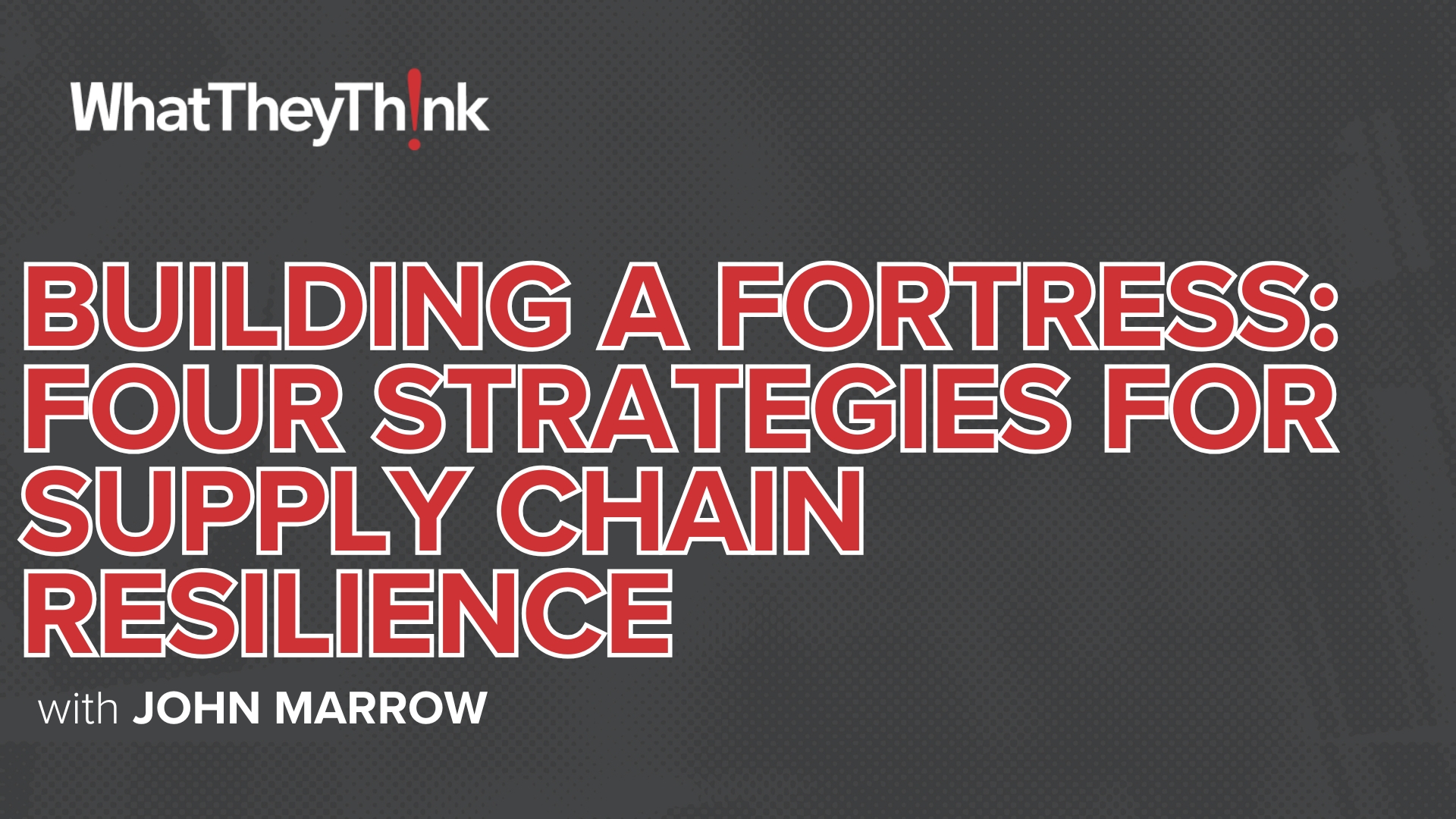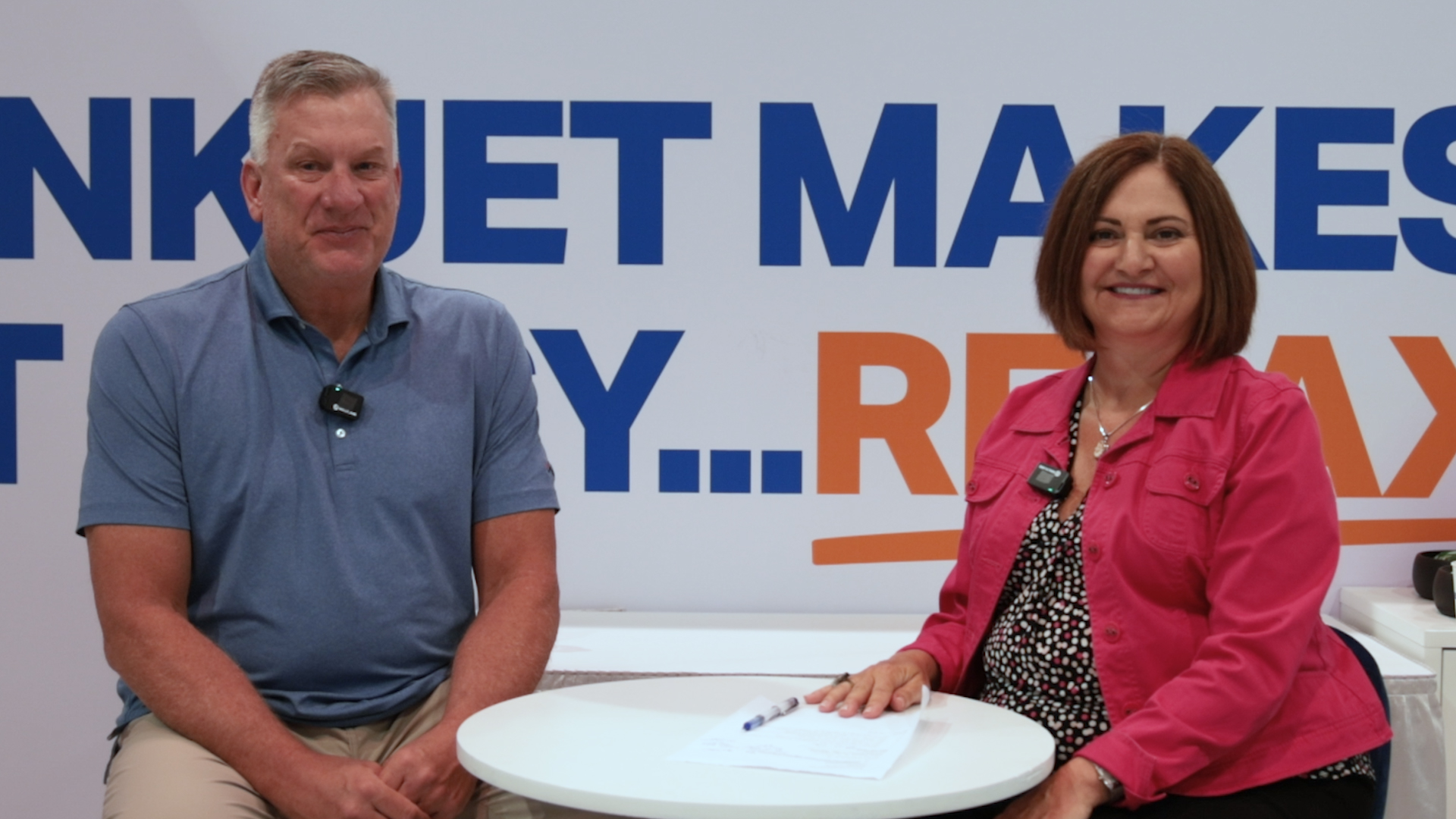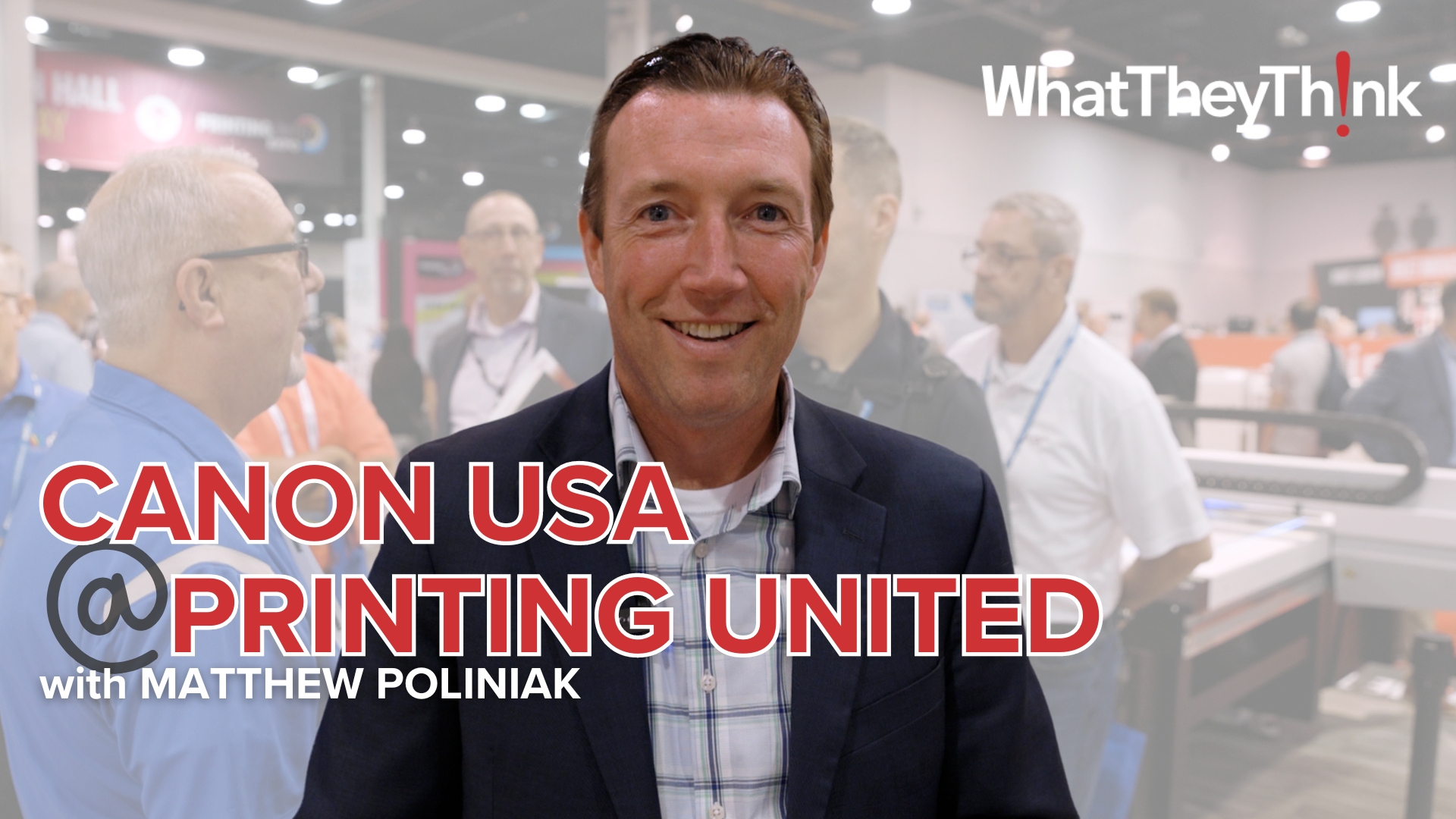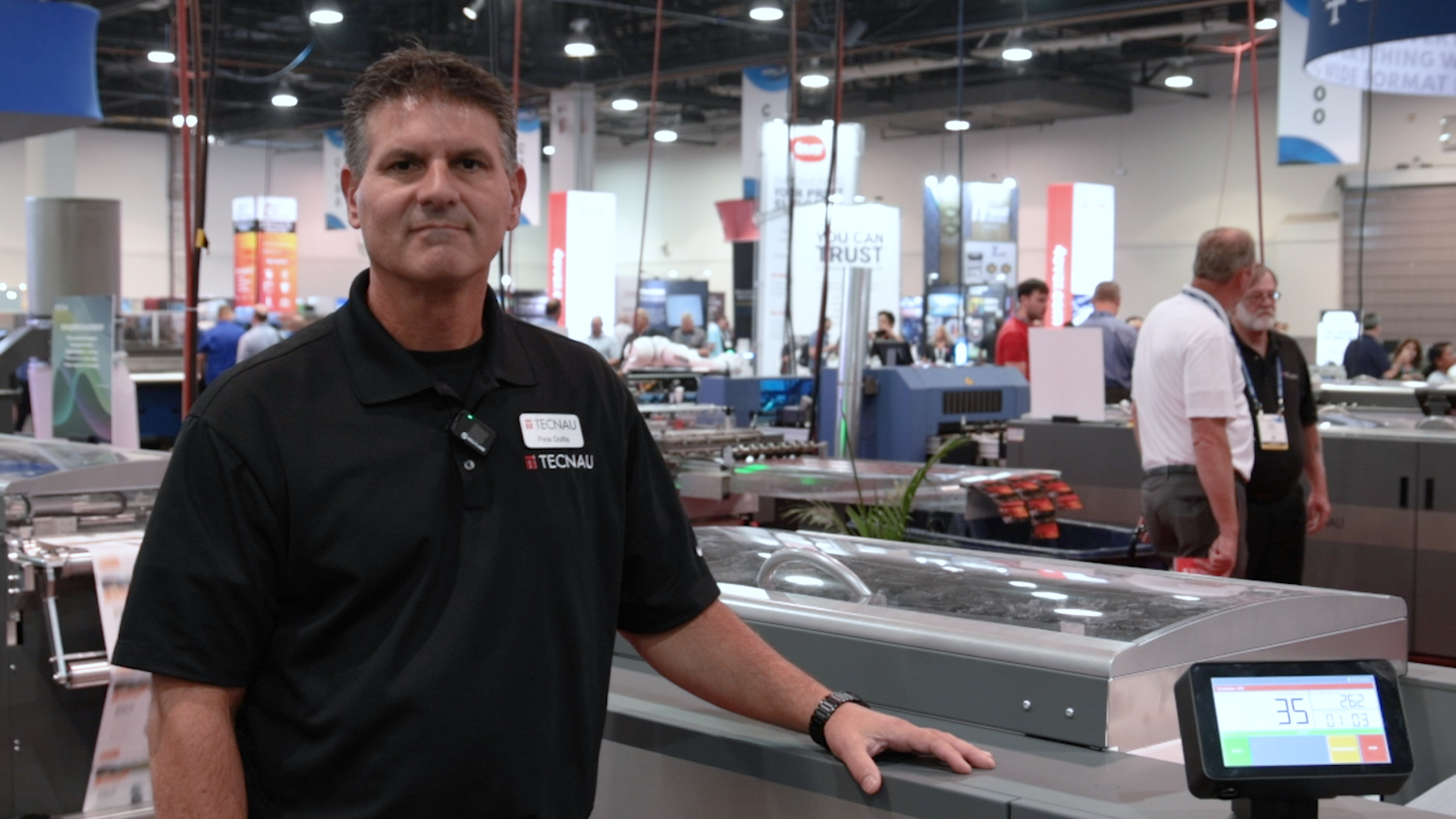Commentary & Analysis
Displaying 4751-4850 of thousands of articles
Insight You Need. Analysis You Trust.
Get the trusted insights you need to understand our evolving industry and emerging trends. Become a Premium Member.
Job Openings Steadily Improving but Have More to Go
The following charts show how job openings have been on a steady rise since the beginning of the recovery in mid-2009, and have now passed the recent peak when the recession began at the end of 2007. But that was a long time ago, and population has grown since that time. The 2000s have a long way to go to catch up with population-adjusted job openings since the turn of the century.
Trends to Watch in 2015: The Domination of Mobile Technology
PCs are expected to become secondary to smartphones and tablets for a significant share of consumers. This trend is driving marketers to focus on mobile application development. This article is the second in a series exploring trends worth watching in the printing industry.
Your Niche Or Mine?
How do you decide what kinds of wide-format or specialty printing products and services to add to your current mix? You can jump into a new niche application as a newbie, or organically expand into new directions. As it turns out, there is no right answer—but plenty of wrong ones.
Retail Trends in Wide Format
I was talking with the owner of a sign shop recently, and we got to talking about new technologies that sign and display companies were starting to utilize—I was thinking specifically of EFI’s SmartSign Analytics—but he happened to mention other new technologies such as “smart fitting rooms” whereby sensors in a clothing retailer’s fitting room mirror track RFID tags on the clothing you brought in to try on and suggests accessories or complementary items. Sound creepy? It does a bit, doesn’t it?
Table Service at McDonald’s
The dining experience at fast food restaurants isn’t about the dining experience at all. It’s about the price, the availability, and the consistency no matter where you are in the world. The value proposition is clear, you serve yourself, you’re encouraged to clean up after yourself, and clearly by the comfort of the seats, you aren’t encouraged to linger.
From Across the Atlantic, Lessons to Be Learned About Sustainable Packaging
A review of recent news about sustainable packaging initiatives in the U.K. and Europe raises confidence that global strategies for managing packaging’s impact on the environment can be developed.
AF&PA’s PaperRecycles.org Sends the Right Message the Right Way
The American Forest & Paper Association (AF&PA) has done a nice job of consumer outreach with PaperRecycles.org, a new web site that aims at better educating the public about recovering paper and paper-based packaging for recycling.
Focus on Solutions in Print Software
Frustration happens, especially with print software projects like Print MIS and web-to-print. When frustration happens do you flex, adjust, look for a solution or do you stay in that frustrated state? Find evidence of the behavior you want more of and reward that behavior, in your people, in your vendors, in your partners – that will accomplish more than yelling, escalating, and threatening will ever do.
EFI Connect and the Imaging of Things
About 15 years ago—give or take—in a monthly humor column I wrote at the time for the late, lamented Micro Publishing News, I proposed the idea of a drive-through wide-format printer for vehicle graphics.
Trends to Watch in 2015: Data Analytics and Micro-Targeting
To thrive in today’s environment, service providers must connect strategy, capabilities, technology, and specific initiatives. Print and marketing service providers who are willing to embrace change can drive profitable business growth. This article is the first in a series exploring trends worth watching in the printing industry.
Production Inkjet—The Next Wave: Super Web Digital with Memjet Aspen
In a continuation of the Next Wave of new production inkjet presses and technology series, we cover Super Web Digital, a ‘Made in America’ press manufacturer, which has introduced two new web press platforms based on new Memjet inkjet imaging technology. What makes this interesting is that both Super Web and Memjet have introduced new technology in these products, bringing both of their offerings to a new level.
Latest Inflation Multipliers
For those who have been following along, the chart below is the latest update for budget planning. It's always a benefit to understand your sales and costs in historical perspective. Without adjusting for inflation, you could be working on assumption of trends and relationships that are untrue. Make it “real.”
What to Strive For in 2015 (And a Plea for Help)
Build your business in 2015 by exploring new opportunities, developing a clear vision for success, and stretching the boundaries of what your shop and your shop’s equipment can produce.
Guinness record: World’s largest wad of paper!
We can’t improve upon a recent press release from the Minnesota Pollution Control Agency (MPCA) about the creation of the world’s largest ball of paper—a stunt with an important point to make about recycling for packaging.
Pennsauken, NJ Printer Follows “Value Stream Map” to Packaging Success
At Contemporary Graphic Solutions, manufacturing efficiency and process improvements are 24/7 preoccupations, especially as they apply to the company’s demanding but rewarding packaging business.
Swiss-Based Trendcommerce Group Looks to Production Inkjet for Business Growth
Swiss-based Trendcommerce (Schweiz) AG has always been a trendsetter in Switzerland. The company has secured its market-leading position through the acquisition of production inkjet presses. This has enabled a white-paper-in workflow, virtual elimination of offset printing, reduction in black & white toner-based volumes and a revenue growth of 50% since 2011. Read more in this HP-sponsored story.
Industry Events, Peer Recommendations, and Print Software Decisions
EFI Connect, Dscoop X, AMPS Executive Leadership, NPOA, and PODI, the upcoming industry events where you have an excellent opportunity to connect and collaborate with peers. Do you want to do everything in your power to assure your next print software decision is a good one? Get the whole story from a peer who has already implemented the solution.
Full Time Employment Still Not Recovered
The number of workers with full time jobs has still not exceeded levels at the start of the recession about seven years ago. This is despite continuous population growth and higher GDP levels for 21 of the last 22 quarters. Of last year's +2.2 million increase in employment, about 970,000 were part time positions. Many part time positions are by choice of the employee, an unknown number may be from distortions resulting from the implementation of the Affordable Care Act, and others are from uneven economic conditions and low expectations about future business conditions. There is some employment optimism in recent surveys of the National Federation of Independent Business and both the manufacturing and non-manufacturing surveys of the Institute for Supply Management.
What Is Wide-Format?
As I was planning the 2015 editorial calendar for our Wide-Format section, I began by drawing up a list of topics that I had covered, topics that were heavily featured at trade shows like SGIA and ISA, and topics tend to get covered elsewhere in the industry press. And aside from the basic technological topics like “Roll-to-Roll Printers,” “Flatbeds,” “Finishing,” and so forth, the majority of the subject matter was on specific applications—and applications that were all over the map (and some even included maps!).
Will You Thrive, Survive, or Die in 2015?
In the coming year, trying something new rather than continuing with business as usual can be the difference between success and failure. This article leverages recent research from InfoTrends to explore how industry leaders are making the most of today’s turbulent market.
SGIA Webinar Considers Web-to-Print for Wide-Format
Web-to-print is not a new technology, but despite its many advantages, when evaluating solutions, be sure to ask some specific wide-format questions.
December 2014 – Mergers, Acquisitions & Restructuring in the Printing, Packaging & Related Industries
The Darwinian process of growth, change, merger, and failure proceeded with full vigor during 2014. The 241 transactions announced during 2014 in the printing, packaging, and related industries in the US and Canada represent a 40% increase compared to the 172 transactions that we noted during all of 2013. The vibrancy of the market is consistent with the M&A activity noted across many industries over the past year
Precision and Pride Drive Label Manufacturing at Mossberg & Company
Mossberg & Company, a commercial printer since 1930, has built an equally successful label printing business through judicious investments in technology and scrupulous attention to quality assurance.
Looking Toward Hunkeler Innovationdays
2015 is already shaping up to be a busy year, and one of the highlights is Hunkeler Innovationdays scheduled for February 23-26 in Lucerne, Switzerland. Cary Sherburne speaks with Standard Finishing President Steven Reny to learn what we might expect at this year’s event.
The False Security of the Print Software RFP
The checklist RFP (Request For Proposal) fails to deliver the best purchasing decision. Your peers (the voice of current customers) are your most trusted source of information about how print software products perform in live environments and how print software companies support their customers after the sales process.
This Is the New Year and I Have No Resolutions
New year’s resolutions are ephemeral things. January 2, for example, is a kind of Black Friday for gyms and fitness centers, but by the end of the month, the crowds have returned to normal.
Innovairre: Rebranding Done Right!
In today’s world, the introduction of new offerings is not always enough; rebranding is sometimes required to truly respond to changing market dynamics. This article explores how Qdmh has rebranded itself as Innovairre.
Federal Debt as Percentage of GDP Over 100%
Economic press coverage of the Federal budget is usually limited to the annual deficit, the shortfall of tax and fee collections versus spending. While the deficit as a percentage of GDP is down to about -4% from 2009 when it was more than -9%, the deficits do accumulate. Now, the total debt of the US exceeds GDP. This is likely to keep political pressure on the Fed to keep rates down. It also means that a 1 percentage point rise in interest rates would cost $180 billion and can double the annual deficit. But the Fed may not be able to increase interest rates when they want to no how hard they might try. International rates, such as those in Germany, have recently been below 0.5% for the 10 year bond. US rates are comparatively high in the 2% range, and any push upward by the Fed would probably be met by arbitrage actions in the other direction.
2015 Should Be Chock-a-Block with Opportunity for Packagers, Market Watchers Say
The end of the year always brings a flurry of state-of-the-market reports from research organizations and commentators tracking the global packaging industry. Here are pulls from some of the year-end pronouncements for 2014 that we gathered last month. They tell us that despite the unpredictability that always has to be factored into forecasts like these, 2015 is shaping up to be a promising year for the world’s packaging printers and converters.
Wide-Format Roll-to-Roll Printer Roundup
In today’s wide-format market, flatbed printers are all the rage and, for certain applications, deservedly so. But the earliest wide-format printers were all rollfed (or roll-to-roll) devices, and it wasn’t until the early 2000s that flatbeds existed as a product category. Flatbeds emerged to take time and materials out of the “print-then-mount” process; after all, why not just print directly on the surface you want the graphic?
Print MIS Product Spotlight: PrintVis
The PrintVis MIS solution has a phenomenal product span, meaning the ability to “flex” in both directions, respond to growth and decline. In this Product Spotlight, Jen Matt reviews the PrintVis MIS solution.
In Eastern Europe, HP Flexes Packaging Muscles It Wants the Whole World to See
With the help of partners in Germany and the Czech Republic, HP aimed to show printers and converters everywhere how digital strategies for packaging production can be attuned to changing demand and “future proof” at the same time.
We Have Always Done it This Way
Change is viewed as risky because we want to believe that past success guarantees our future success. Your customers are changing, technology is changing, and your competitors are changing, why would you think that maintaining the status quo is anything but the riskiest thing you can do? Standing still is the only way to assure your business’ decline
Ho, Ho, Ho… Christmas Catalogs Go Mobile!
eMarketer estimates that worldwide smartphone users will surpass 2 billion by 2016, so it is no wonder that retailers of all sizes are making it easy for on-the-go consumers to link to catalogs with mobile applications. This article explores how retailers are integrating mobile to accelerate the purchasing process.
EFI plans Connect on Steroids in 2015
EFI Connect 2015 is shaping up to be one of the best ever, so much so that EFI COO Marc Olin describes it as “Connect on Steroids.” Read what he has to say about Connect, EFI’s future strategies and his role as COO of the company in this interview with WhatTheyThink Senior Editor Cary Sherburne.
Profits Still Below $4 Billion on Annual Basis
Four billion dollars was the approximate bottom of 2005's inflation adjusted annual profits. The four-quarter total annual profits have had a difficult time breaking through that level for more than eight years.
What Kind of Day Has it Been?
2014 has been a year of incremental—but substantial—improvements in wide-format systems. These improvements are creating ever more opportunities in a variety of applications. Here’s what to keep an eye on in 2015.
Miyakoshi Showcases Its Equipment Portfolio for Label Printing and Other Applications
A print equipment supplier for almost 70 years, Japan's Miyakoshi Printing Machinery Co. Ltd. is an OEM partner to many of the industry's top technology providers. At a recent open house, the company put the spotlight on presses for labeling and other uses that it markets under its own brand.
Mark Cuban and Print Shop Owners Score with Shark Tank – November 2014 M&A Activity
Less than a year after swimming with the sharks on the popular TV show Shark Tank in January 2014, husband-and-wife team and printing company owners, Julie and Brian Whiteman, sold their digital photobook app, GrooveBook, to Shutterfly for $14.5 million.
Increase Print Software User Adoption by Showing Less
Often the best way to drive a print software solution’s adoption rate is to eliminate the complexity. How ironic is this? We buy print software products based on extensive feature lists and then we drive adoption of the software by turning most of the features off so people will actually use the tool. Isn’t that an awesome irrational cycle we put ourselves into?
Ho, Ho, Ho… Greeting Cards on the Go!
This holiday season, greeting cards are taking on a whole new dimension. This article explores how tried-and-true greeting cards are becoming more innovative with the inclusion of interactive elements.
Semiconductor Manufacturer Maxim Integrated Finds Sales Power in Adobe Digital Publishing Suite
As our readers will know, we have been following developments with Adobe Digital Publishing Suite, both in terms of how it is helping publishers tackle the “dollars to digital dimes” conundrum of digital publishing as well as some interesting views into how enterprises are adopting DPS for sales enablement. Today’s story takes us to Maxim Integrated, a designer and manufacturer of semiconductors, who has benefited from the integration of DPS with Adobe Experience Manager for increased sales power.
Inflation-adjusted Sales of S&P 500 Firms Still Below Pre-Recession Levels
GDP may say that the recession ended in June 2009, but there are still data series that have not yet confirmed that five years later. Total employment is one of them, as is median household income, but so is the inflation-adjusted sales of companies in the S&P 500. Even though the companies in the S&P 500 index have revenues lower than the peak of June 2008, the S&P 500 stock index is getting closer to all-time high levels of Spring 2000 (The Dow Jones average already is, the Russell 2000 has been for a while, but the NASDAQ is still off by about 15%). These sales of 500 of the world's best companies have not kept up with real GDP growth since the recession ended (about 2% per year). Some economists believe that this is an indication that GDP data should be viewed with great suspicion, and that there has yet to be a true recovery.
Print MIS Product Spotlight: PressWise
The online channel is vital to the future of your print business. The online channel includes all the ways you engage with your customers online. Every new channel you open up with a customer increases the overall loyalty of that customer, creates barriers to entry for your competitors, and has the potential to decrease the customer burden of doing business with you by offering self-service access to your business.
Solid Five-Year Outlook for Corrugated and Paper Boxes
There's encouraging news for producers of corrugated and paper boxes in a newly released research report which forecasts that demand for these products will increase 2.6% per year to $39.4 billion in 2018.
Business Goes Swimmingly for Digital Dye-Sublimation Printer
Epson’s beachwear “fashion show” highlights the possibilities of digital dye-sublimation fabric printing, and how it could change fashion design.
How Heidelberg Is Realigning Its Product Offerings to the New Realities of the Label and Packaging Market
Heidelberg's profile as an equipment manufacturer is not the same as it once was, but its interest in label and packaging production is as keen as ever. This report comes from a high-level briefing that WhatTheyThink received on the company's current ambitions in the L&P equipment market.
Landa Digital Printing Provides Update, Outlook to drupa 2016
We haven’t heard much from Benny Landa lately. But the team has been at work perfecting the first press, the S10, and lining up customers. A blog post from Landa and a link to a video tour of the press and the factory are highlights of this post.
Is Upgrading Worth the Risk?
Making the decision to upgrade a Print MIS or web-to-print system can cause anxiety about the unknown issues that may result. A well-planned out implementation can minimize risk and disruption to both the printer and their customers.
Ho, Ho, Ho… Mobile Barcodes on the Go!
Today’s consumers have truly embraced a number of new channels, and the penetration rate is something that marketers couldn’t have even imagined a decade ago. The holiday season is here, and this article explores how retailers are embedding mobile technology into their holiday campaigns.
Revised GDP Pushed Higher, But Did Not Change Longer Range Growth Rate
Third quarter GDP was revised from +3.5% to +3.9%, but the change was mainly in net inventories, and did little to affect the assessment of underlying and longer range growth compared to the prior year of about +2.43%. Inventories have been bouncing around a bit over recent quarters and are running a little higher than they should be, indicating that some minor correction is forthcoming, especially if non-US economies are slowing down.
Rapid Digital Press Maps Out Wide-Format Success
With a little research, a clearly defined strategy, and fast, high-quality wide-format printing equipment, Phoenix, Ariz.’s Rapid Digital Press has carved out a successful niche in map and GIS printing applications, and is now poised for growth.
Rotolito Establishes Digital Production Unit to Meet Changing Demands for Book Printing
Rotolito, one of the largest printing companies in Europe, has built a €10 million business in digital book printing since the inception of its digital operation in 2010. Read what Rotolito’s Gabriella Moretti has to say about the changing dynamics of its book printing business in this article, sponsored by HP.
Flexographic Printing: Five Critical Steps Forward
The good news is that flexographic printing for labels and packaging has resisted economic downturns and competition from digital while becoming a higher-quality, more efficient production method in its own right. The better news is that continuing technical improvements are carrying flexo toward still higher levels of performance.
From Europe, a New Definition for Labeling
This summer, members of FINAT, the international trade association for self-adhesive labeling and related industries, met in Monte Carlo for an annual congress around the general theme of "The Battle for Shelf Appeal." What emerged were an updated redefinition of labeling and a frank reassessment of the role that labels play in a greatly altered selling environment for packaged goods of all kinds.
Embrace Print Software as Complimentary to Your People
Your people have the power to resist print software technology changes by focusing on the challenges instead of finding solutions. Your job as a leader is to portray technology as a complimentary tool for your people to work more effectively.
2014 SGIA Expo: Finding new Business Opportunities and Areas for Growth
October’s SGIA Expo was about more than just new technology, it was about finding new business opportunities and areas for growth. Here are some examples of printing companies who gleaned practical information from the show to take their businesses in new directions.
M&A: Still a Buyer’s Market?
Printing companies are experiencing a modest reprieve from the very tough market of the past several years, leading many owners to wonder, is now the time to sell?
Memo to self: get all the *?@#! toothpaste out of the tube, or die trying
Did you know—well, heck, how could anybody know?—that some people are willing to injure themselves if that's what it will take to force the last drop of product out of a container? Or that consumers would rather go to the dentist than see product they've purchased go to waste in packages they can't empty completely?
Dietary Supplements Meet Digital Printing at Labels in Motion, Courtesy of Xeikon
Dietary supplements and nutraceuticals are big business for a small in-plant label printer with digital capabilities that match its marketing ambitions and objectives. An update on Xeikon strategies and financials is also included in this article.
Collaborative Commerce: The Necessary Evolution of Web-to-Print
Web-to-print technology and the customer facing resources working in print today need to evolve together so we can support online “collaborative commerce”: a procurement process that requires collaboration between the buyer and the seller.
Transforming and Automating Workflows: Packaging Workflow Standards and Futures Part 2
David Zwang looks at process transformation and automation, and the background and steps you need to understand to be successful. He also looks at some of the current product offerings and how they are being used by service providers, to give you ideas about how you can transform your business and strengthen your customer relationships.
Plan for a Culture of Continuous Process Improvement in 2015
One of the biggest challenges with print software technology today is achieving its full potential. We often get lost in the running of our day-to-day business which prevents us from ongoing process improvement. After the initial implementation, we get distracted and back to the reality of getting customer jobs out the door. We fall into the bad habit of reactive improvement, or if you prefer a more technical term, “Band-Aids”.
Accelerating Growth through Strategic Acquisitions
While hard work is always a key ingredient for successful business growth, printers of all sizes are pursuing strategic mergers and acquisitions as a mechanism to further strengthen their businesses. While growth through acquisition was once considered the domain of large enterprises, companies of all sizes are now discovering that they can gain access to new printing technologies or services by acquiring or merging with another company. This article explores how First Edge Solutions has achieved business expansion through strategic acquisitions and partnerships.
Mimaki Mini-Expo Hits the Spa City
Mimaki’s 25-city road show includes hands-on product demonstrations and educational presentations that highlight new features of, and top applications enabled by, today’s wide-format printing equipment. Here is a report from one stop on the tour.
Print MIS Product Spotlight: CoreBridge
CoreBridge is a cloud based, multi-tenant software solution whose business model is subscription based. Like pure technology startups, CoreBridge’s pricing model is easy to understand, available on their website, and allows you to start small and grow with CoreBridge through volume and/or functionality.
Past Is Prologue: 150-Year History Spurs DWS Printing Associates to New Ambitions in Label Production
Continuous reinvestment and continuous reinvention sum up the strategic thinking at DWS Printing Associates, a Long Island label printing firm with deep roots in the past and a progressive view of the future.
And the Winner Is...the Package!
What lends itself more readily to creative competition than a well designed package? The packaging industry is full of contests that showcase the high degree of graphic innovation that can be found in packages of all types and materials. Here is a short list of some of the competitions that celebrated the art of packaging design in 2014.
Teaching and Telling Stories Online
First impressions of your business matter, especially to new prospects. More and more first impressions are online. How does your online presence compare to your offline one?
Canada Per Capita Commercial Printing 1992-2014
Using printing shipments and population data from Statistics Canada, we have prepared this chart that shows per capita shipments of commercial printing in Canada current dollars and Canada inflation-adjusted dollars.
HP Prepares for Jetcomm: First Production Inkjet User Group and Global Conference
HP has begun planning for Jetcomm, its first-ever Production Inkjet User Group, with a conference to be held in March 2015 in Washington, D.C., immediately preceding DscoopX. Senior Editor Cary Sherburne speaks with David Murphy, WW Director of Marketing for HP’s production inkjet business, to learn more.
SG360°: Helping Customers Handle the Data Challenge
Research confirms that there is a growing disconnect between what marketers want and need from their data and what they are actually getting. This article discusses some of the challenges that today’s marketers are facing and explores how SG360° is taking a different approach to improve its clients’ marketing efforts.
Top Challenges When Executing Personalized Communications/Campaigns
InfoTrends’ study entitled Understanding Vertical Markets: Enterprise Communication Requirements surveyed over 1,000 enterprise executives. When asked about the top data challenges that they faced related to executing personalized campaigns, respondents highlighted tracking responses, understanding response drivers, and analyzing and mining data.
Marketing Equals Lead Generation – Give them a Quota
Unless you are a large public company who needs to “protect their brand” and produce appropriate messaging for Wall Street (otherwise known as corporate marketing), the primary role of marketing in your organization should be lead generation.
A Wide-Format Digital Print Perspective from Graph Expo
InfoTrends revisits September’s Graph Expo and recaps some of the highlights from a wide-format perspective. At the same time, the show itself is evolving into entirely new directions, reflective of how the industry itself is evolving.
Holiday Season Marketing and Packaging Trends
Can it be mid-November already, with preparations for the year-end holidays getting into full swing? Just ask International Paper. The Wall Street Journal recently quoted IP’s chief executive Mark S. Sutton as saying that box orders for the online retail segment have been up 15% year-over-year in 2014 and could continue rising, depending on demand. The story reports that the surge in demand for holiday packaging from both online and traditional retailers is helping to improve the performance of IP’s industrial packaging unit, which provides cardboard boxes, specialty packaging, retail displays, and paper bags.
Why are These Millennial-Generation Printers Smiling? – October 2014 M&A Activity
October 2014 –Mergers, Acquisitions & Restructuring in the Printing, Packaging & Related Industries
New Survey Report Takes Fact-Based Look at Label & Packaging Market Realities
Filtering what we know from what we think we know about label and packaging market trends is the objective of “Emerging Technologies for Packaging Innovation,” a newly published report from GrCI Cal Poly and Packaging World.
Print Software: Dreaming vs. Executing
The raw potential of what technology can do for our business is unlimited, like a book a matches there is great possibility. Execution is about determining which match (project, goal, objective) you are going to put your energy into to ignite and then sustain your focus to create real change. Dreaming helps you think big, executing forces you to act within the constraints of your environment (resources, market, customers, and budget).
Generation Z: Changing Communications Forever
It is estimated that Generation Z—those born between 1994 and 2004—represents over 25% of the U.S. population. These individuals are rapidly coming into their own in terms of influence, consumption, and spending power. This article considers the ways in which businesses can reach these up-and-coming consumers.
SGIA Recap II: Chalk it Up to Experience
The SGIA Expo was about more than just new hardware—new substrates were also on display, as well as what keeps the hardware productive: color management, production, and RIPing software.
The Top Three Functional Additives in the Plastic Packaging Market
Functional additives help plastic packages do a better job of protecting their contents. Of the many different kinds of functional additives, the most widely used are those that remove unwanted oxygen, block UV and IR radiation, and eliminate or reduce static.
Bridgeport National Bindery Turns to Production Inkjet to Revolutionize Its Business
Massachusetts-based Bridgeport National Bindery has turned to production inkjet press technology to revolutionize its business and to significantly outweigh the decline in its traditional library binding business as discussed in this article, sponsored by HP.
Fostering a Great Relationship between Your Web-to-Print and Print MIS Systems
Having an integrated web-to-print and print MIS system isn’t just about being able to technically connect the systems. To get the most out of this integration you want to enable communication between systems that makes the two systems truly seem like one in terms of information exchanged
Digital Publishing Delivers Significant Business Results for Stryker Orthopaedics
Our continuing coverage of the impact of digital alternatives on the world of print and publishing features Stryker Orthopaedics’ use of digital publishing technologies to more deeply engage its sales force and surgeon customers while reaping significant cost and time savings. Senior Editor Cary Sherburne speaks with Stryker’s Orthopaedics’ Creative Director Stephen Brown to learn more about the journey.
What Does the iPhone 6 Mean For Printers
As a print service provider, your services help your customers build their business and their client base. To stay competitive, it's vital that you stay ahead of the game, keeping abreast of changing technology that can change the way you do business and the services you offer your customers. That's why you need to know about the new iPhone 6 and its NFC (Near Field Communication) technology, brand new for this iPhone model.
Define the Problem First
I am involved in a lot of conversations where companies and people are trying to solve a business challenge with software. Communication is so compressed nowadays, people’s time is limited, and we are almost always communicating across multiple time zones and frequently across cultures. This makes a common understanding difficult and opens up lots of opportunity for confusion.
HP Adds New Dimension to “Blended Reality”
At a launch event in New York City Wednesday morning, HP made two new technology announcements under a category it is calling Blended Reality—a 3D printing platform called Multi Jet Fusion, and a new type of interactive workstation/workspace called Sprout. Both these initiatives are part of what HP is calling its Blended Reality ecosystem designed, says the company, “to break down the barriers between the digital and physical worlds.”
Getting Ready for 2015: Helping Marketers Generate Leads
We live in an interesting time for lead generation marketing. With e-commerce and self-service sales, some companies don’t even need a sales force. They just need very effective lead generation marketing to help bring customers to them. This article highlights recent data and offers success strategies for service providers.
The Future of Kodak: A WhatTheyThink Exclusive Interview with CEO Jeff Clarke
Senior Editor Cary Sherburne recently had the opportunity to spend quality time with Kodak’s new CEO, Jeff Clarke. Read on to hear what Clarke has to say about what attracted him to Kodak, where he plans to take the company, and his strategies for getting there.
High-Wire Acts: Adventures at the 2014 SGIA Expo (Part 1)
SGIA Expo exceeded virtually everyone’s expectations. In Part 1 of our show coverage we look at some of the major hardware introductions.
Memjet Tears Up Rapid’s inkjet Agreement
Memjet, the US company that in 2012 acquired the patent portfolio of Sydney-based Silverbrook Research relating to MEMS-based inkjet digital printing, has terminated its OEM partner agreement with Australia’s Rapid Packaging Services. The agreement has three more years to run until 2017.
What Can Recent Trade Shows Tell Us about the Industry?
Now that most of the year's big trade shows are behind us, we can think back on what we've seen. The September Label Expo Americas show in Chicago offered what we believe is a good lesson—for a print-related trade show to stay vital, labels and packaging are a key source of longevity.
The Beauty of Packaging
Sometimes, it’s good to step back from the speeds, feeds, and tech specs to reflect on the fact that packages and labels can be, well, downright beautiful. Eye-beguiling examples of the aesthetic gems that high-end production makes possible are all over the Internet.
Getting Found: Yellow Pages to Online Search
Online search has replaced the Yellow Pages as the primary way local businesses get found. This change requires a very different approach by businesses and a steep learning curve. The online world requires you to compete to be “found” for a lion share of the search traffic. The competition is constantly changing, therefore local businesses need to make a sustained investment.
Transforming and Automating Workflows: Packaging Workflow Standards and Futures Part 1
There have been many new digital label and packaging presses released recently, and there are more to coming in the near future. However, these new digital presses will never reach optimal production levels or support and drive the new market requirements, without new standards and workflows.
What Does “Change” Mean to You?
Change evokes fear in some, excitement in others, and dread in many. What we can all agree on, change is picking up the pace.
If You Think Selling Your Business is Like Selling Your House – Guess Again! Part Two: Improving Value
This is part two of a series on the differences between selling a house and selling a business. In part one, we discussed some of the key drivers and the effects that improvements have on home value. In part two, we drill down into the effects that various improvements in a business can have on transaction value.
Xerox’s European Premier Partners Jump on the Innovation Bandwagon
There’s a quiet revolution happening in the printing industry. In an effort to jump-start innovation, printing companies are collaborating with vendors to apply new strategies, digital tools, and technologies. Xerox’s Premier Partner Congress in Madrid, Spain explored how market innovations continue to enhance print’s value as part of the overall communications mix.
Dr. Joe Truncale to Leave NAPL after 30 Years
After serving for 30 years at NAPL, Joe Truncale has decided to leave the association to accept the positon of CEO of the Public Relations Society of America (PRSA). Effective January 12, 2015, Ken Garner will become the CEO for AMSP/NAPL/NAQP. Garner was the CEO of AMSP at the time of its merger with NAPL/NAQP. Senior Editor Cary Sherburne talks with Truncale about the past, present and future of his career.
- Questions to ask about inkjet for corrugated packaging
- Can Chinese OEMs challenge Western manufacturers?
- The #1 Question When Selling Inkjet
- Integrator perspective on Konica Minolta printheads
- Surfing the Waves of Inkjet
- Kyocera Nixka talks inkjet integration trends
- B2B Customer Tours
- Keeping Inkjet Tickled Pink
© 2024 WhatTheyThink. All Rights Reserved.














